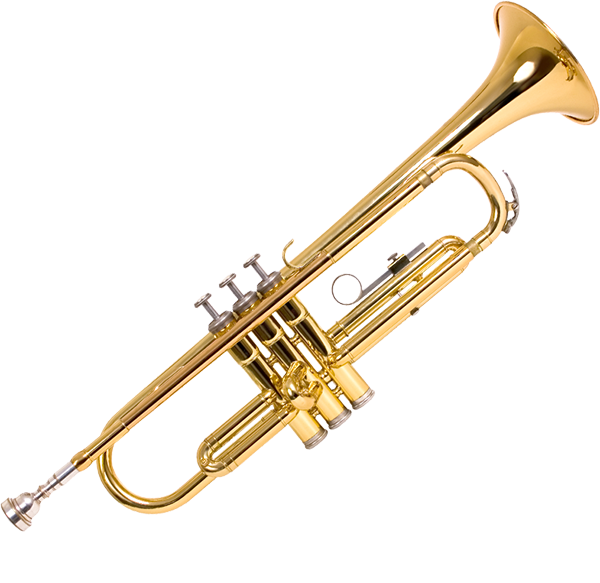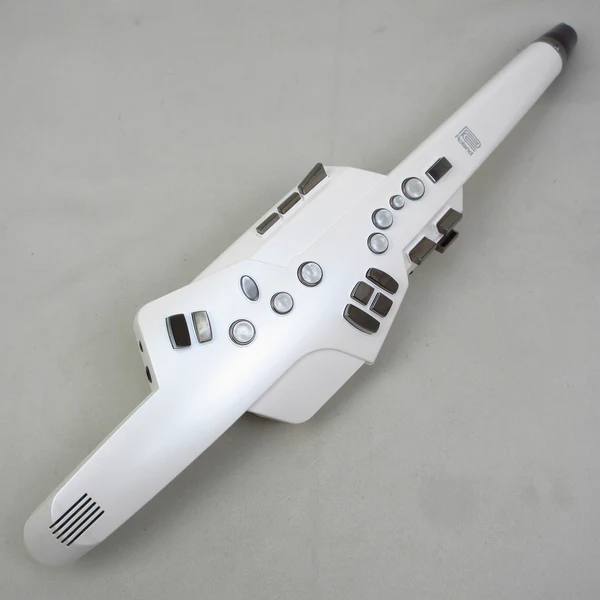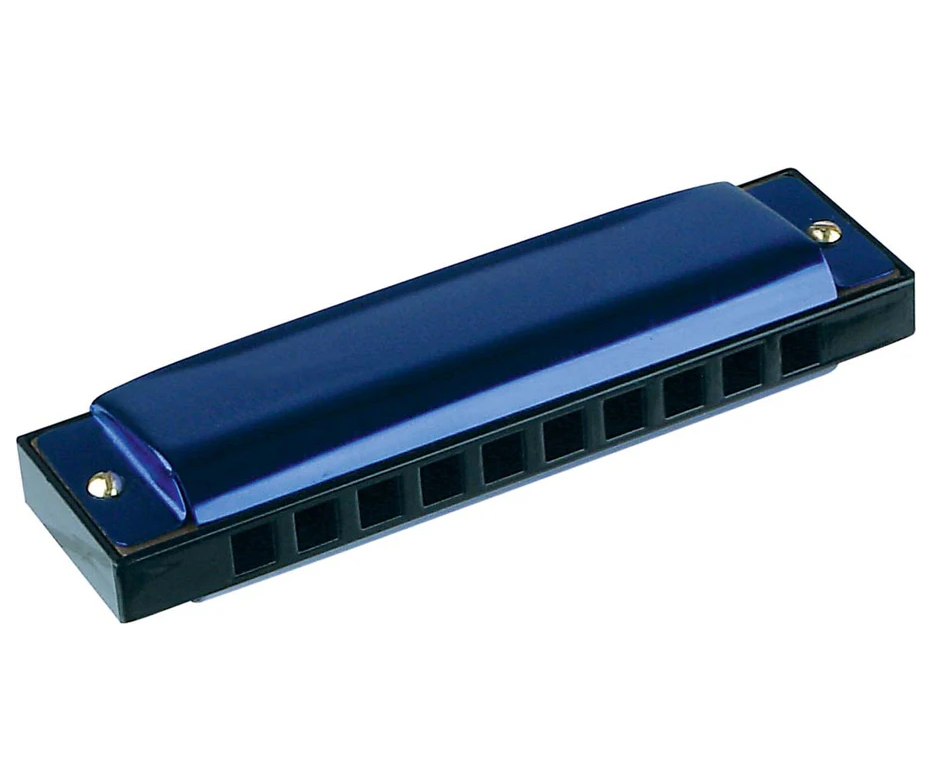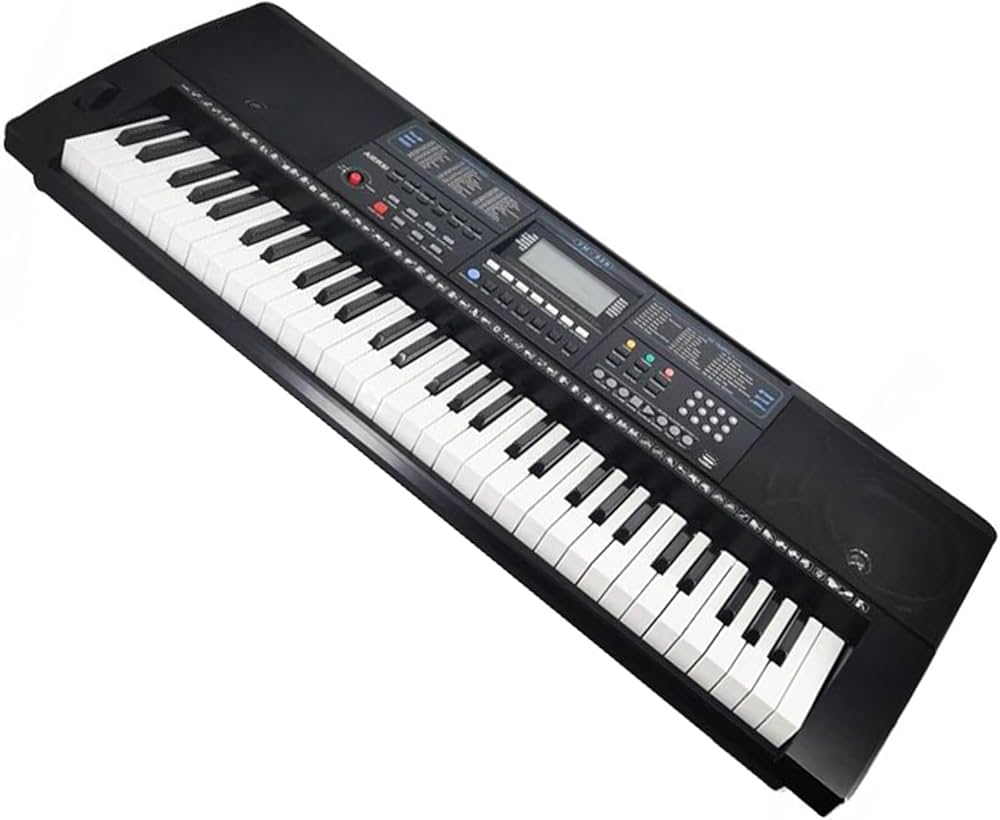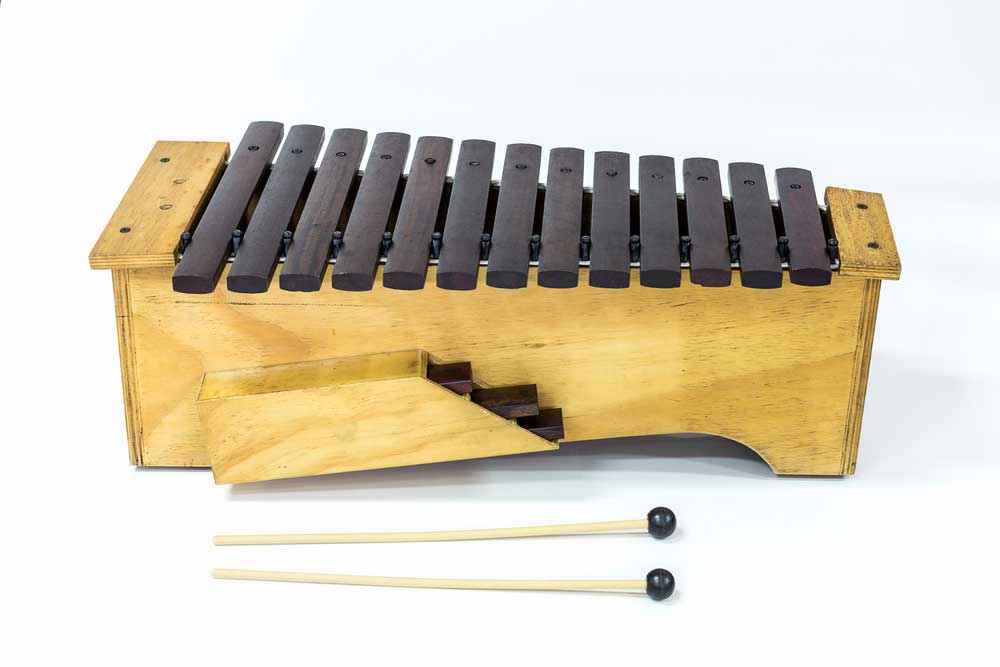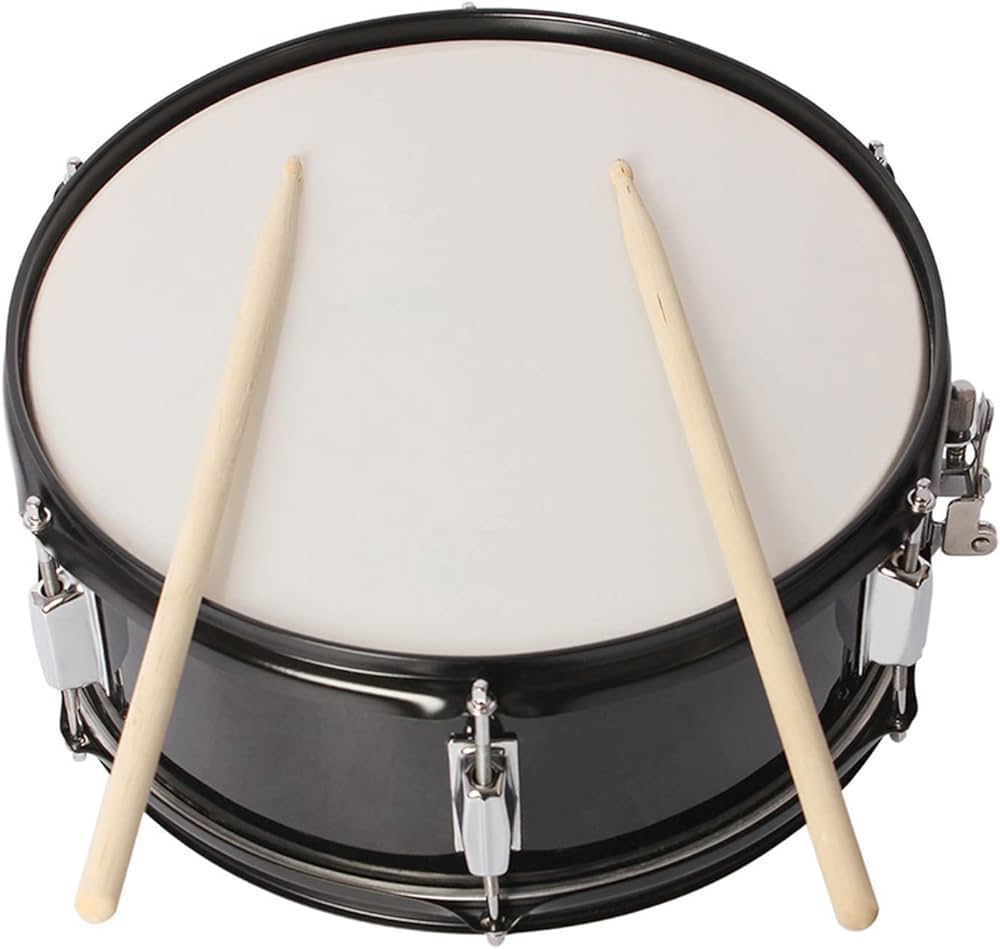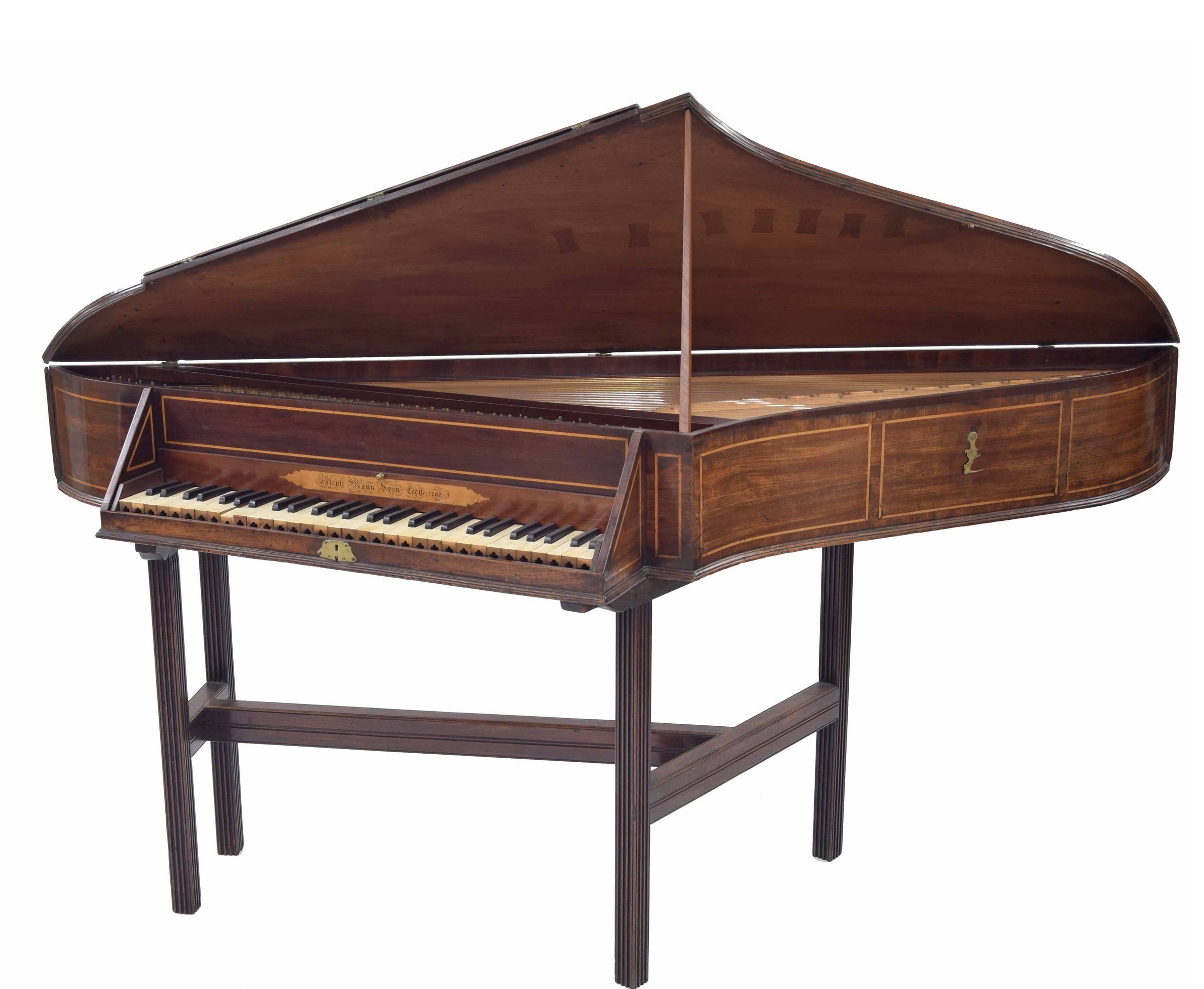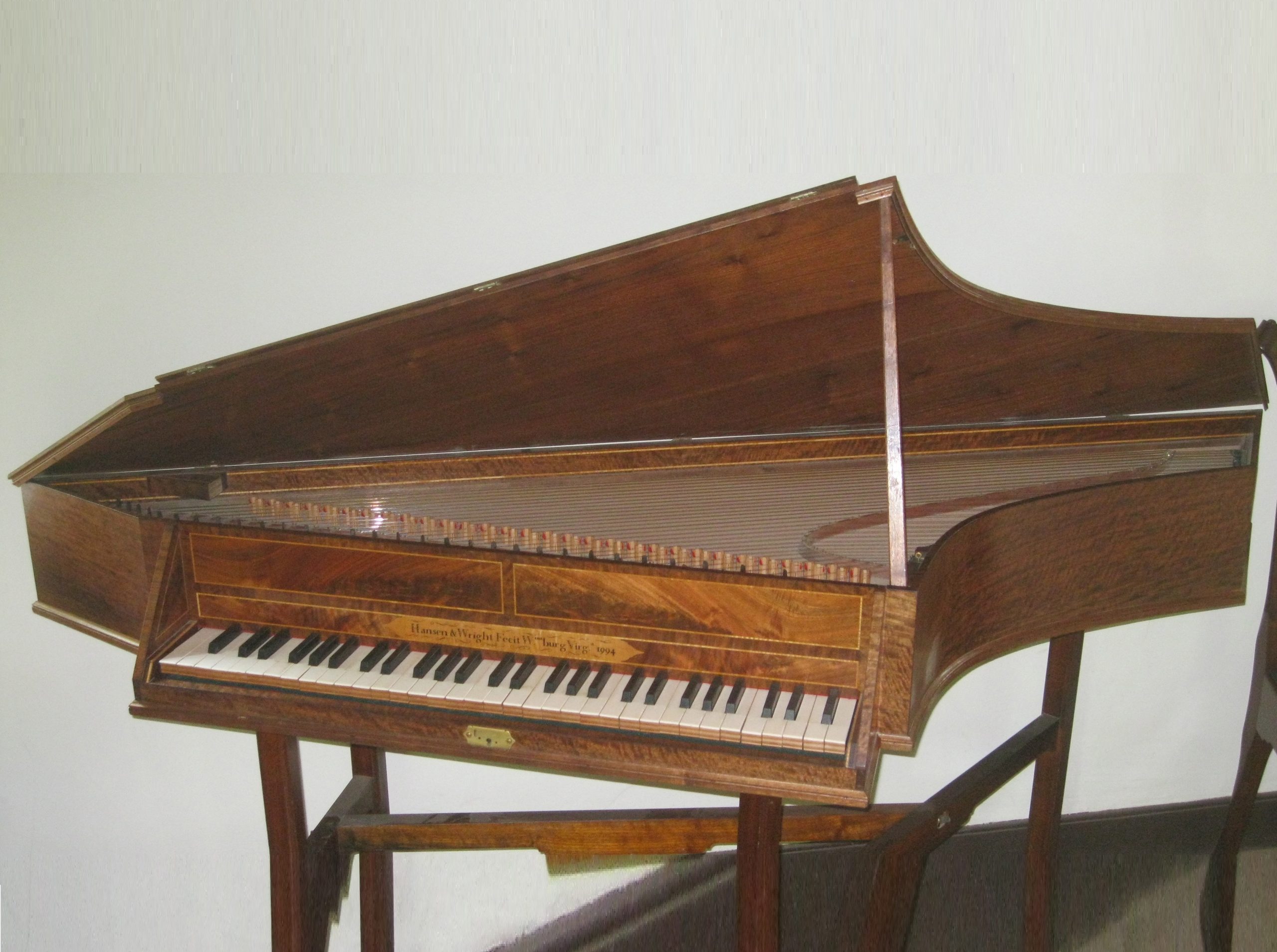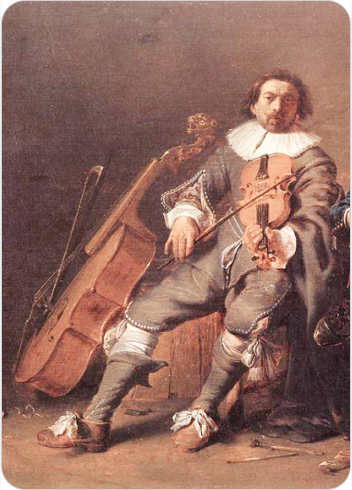Spinet
Keyboard Instruments
Europe
Between 1001 and 1900 AD
Video
The spinet is a small, plucked keyboard instrument belonging to the harpsichord family. It is characterized by its compact size and distinct diagonal string arrangement. Unlike the full-size harpsichord, where the strings are perpendicular to the keyboard, or the virginals, where they are parallel, the spinet’s strings are set at an angle of approximately 30 degrees to the keyboard. This unique configuration gives the spinet its triangular or bentside shape, with one side often bent concavely.
Spinets are typically smaller and more portable than their larger harpsichord counterparts, making them ideal for domestic use. They were often favored by individuals who sought a more affordable and space-saving alternative to larger keyboard instruments. Despite their reduced size, spinets share many construction features with full-size harpsichords, including their soundboard and plucking mechanism. However, their smaller soundboards and angled string layout contribute to a distinct tonal quality that is softer and less resonant than that of a harpsichord. The instrument’s design often includes a single set of strings (known as a choir) tuned to eight-foot pitch. The paired string arrangement, with jacks plucking adjacent strings in opposite directions, allows for efficient use of space but limits the spinet’s tonal versatility compared to larger instruments with multiple choirs. This compact design was particularly suited for private homes rather than large concert settings.
Type of Instrument
The spinet is classified as a chordophone within the broader category of keyboard instruments. Specifically, it is a member of the harpsichord family, which also includes virginals and clavichords. Like other harpsichords, the spinet produces sound by plucking strings with plectra attached to jacks when keys are pressed. This mechanism distinguishes it from other keyboard instruments like pianos, which use hammers to strike strings. In addition to its role as a harpsichord variant, the term “spinet” has also been applied to small upright pianos produced in the 20th century. These spinet pianos featured a unique “drop action” mechanism that allowed for a compact design but often compromised sound quality and playability.
History of the Spinet
The origins of the spinet can be traced back to the late 15th century in Europe. The name “spinet” is believed to derive from either Giovanni Spina, an Italian instrument maker active during this period, or from the Latin word spina, meaning “thorn,” referencing its thorn-like plectra. The first known mention of the spinet dates to 1496. Spinets gained popularity during the Renaissance and Baroque periods (16th–18th centuries), particularly in Western Europe. They were widely used in Italy, France, England, and Germany as domestic instruments for amateur musicians and composers. Their affordability and compact size made them accessible to middle-class households that could not afford larger harpsichords.
By the 17th century, spinets had become highly refined instruments with intricate craftsmanship. Italian makers were particularly renowned for their elegant designs and rich tonal qualities. During this time, Bartolomeo Cristofori, an Italian instrument maker famous for inventing the piano, also experimented with spinet designs. His innovations included the oval spinet and spinettone, which featured unique string layouts and mechanisms for changing registrations.
The popularity of spinets began to decline in the 18th century as larger harpsichords and fortepianos became more prevalent. However, their influence persisted in later keyboard designs, including square pianos and upright spinets manufactured in the 19th and 20th centuries.
Construction and Design
The construction of a spinet involves several key components that contribute to its distinctive appearance and sound:
The case of a spinet is typically triangular or bentside in shape. The longest side runs parallel to the bass strings, while one side curves away from the player toward the rear corner. This design allows for efficient use of space while accommodating the angled string layout. The keyboard is located on the front side of the instrument and usually spans four octaves. Keys are connected to jacks that pluck strings when pressed. Strings are arranged diagonally relative to the keyboard at an angle of about 30 degrees. They are paired closely together with alternating gaps for jacks. The diagonal layout allows for a compact case but limits tonal versatility compared to larger harpsichords.
The soundboard amplifies vibrations from plucked strings. Spinets have smaller soundboards than full-size harpsichords, contributing to their softer tone. Jacks are thin wooden strips that hold plectra made from quill or plastic material. When keys are pressed, jacks rise to pluck strings and produce sound. Spinets were traditionally constructed using high-quality woods such as spruce (for soundboards) and hardwoods like oak or walnut (for cases). Strings were made from brass or iron wire.
Types of Spinets
Several variations of spinets have been developed over time:
Bentside Spinet – The most common type of spinet with angled strings and a curved case.
Oval Spinet: – Invented by Bartolomeo Cristofori in the late 17th century; features an oval-shaped string arrangement.
Spinettone – A large spinet designed by Cristofori with multiple choirs of strings for greater tonal versatility.
Spinet Piano – A small upright piano produced in the 20th century with a drop-action mechanism.
Playing Techniques and Sound Modifications
The spinet, whether referring to the smaller harpsichord variant or the spinet piano, requires nuanced playing techniques due to its unique design. For the harpsichord-type spinet, the player must adapt to the plucking mechanism of the strings, which produces a delicate and intimate sound. The keys are lighter to press compared to modern pianos, and players often use subtle finger pressure to control dynamics, though tonal variation is limited by the instrument’s mechanics. Ornamentation, such as trills and mordents, is commonly employed to enhance expressiveness. In spinet pianos, the “drop action” mechanism requires a slightly different touch. The indirect hammer action can feel less responsive than standard upright or grand pianos, demanding precision in finger placement and strength for consistent tone production. Due to the compact design, achieving a balanced sound across registers can be challenging. Sound modifications on spinets are limited compared to larger instruments. In harpsichord spinets, altering the plucking points or adjusting plectra materials can slightly change tonal quality. Some historical models, like Cristofori’s oval spinet, allowed players to select different string choirs for contrasting timbres. In spinet pianos, however, tonal adjustments are constrained by their smaller soundboards and shorter strings.
Applications in Music
Historically, spinets were primarily used in domestic settings due to their compact size and affordability. During the Baroque period (17th–18th centuries), they were favored as practice instruments or for small-scale performances in private homes. Their delicate sound made them ideal for accompanying singers or small ensembles in intimate spaces. In modern times, spinet pianos have been popular among beginner pianists and families with limited space. They are often used for casual music-making rather than professional performances due to their limited tonal range and volume. However, they remain cherished for their historical significance and aesthetic appeal. Harpsichord spinets occasionally appear in historically informed performances of Baroque music. Their unique tone is particularly suited for works by composers such as Domenico Scarlatti or François Couperin. Additionally, some contemporary musicians incorporate spinets into experimental or crossover genres to evoke a sense of nostalgia or historical ambiance.
Most Influential Players
While no single performer is universally associated with the spinet, several figures have contributed to its prominence:
Bartolomeo Cristofori: Known for inventing the piano, Cristofori also created innovative spinet designs like the oval spinet.
Johann Sebastian Bach: While primarily associated with larger harpsichords and organs, Bach’s compositions were often played on spinets in domestic settings.
Domenico Scarlatti: His keyboard sonatas were frequently performed on spinets during his lifetime.
Modern Revivalists: Contemporary performers specializing in early music have brought renewed attention to spinets through historically informed performances.
Maintenance and Care
Proper maintenance is crucial for preserving the functionality and sound quality of spinets:
Regular tuning is essential due to the sensitivity of spinet strings and soundboards. Harpsichord spinets require frequent adjustments because of their plucking mechanism. Spinets are highly susceptible to changes in humidity, which can affect wood components and tuning stability. Maintaining consistent environmental conditions is key. Dust accumulation can impair the action mechanism in both harpsichord and piano spinets. Gentle cleaning with a soft cloth is recommended. Over time, strings may lose tension or break. Replacing them with appropriate materials ensures optimal sound quality. The “drop action” in spinet pianos can be difficult to access due to cramped interiors. Professional servicing is advised for complex repairs.
Cultural Significance
The spinet holds a unique place in musical history as a symbol of accessibility and domestic music-making. During the 17th and 18th centuries, spinets democratized music by offering an affordable alternative to larger harpsichords or organs. They became central fixtures in middle-class households across Europe. Spinets were often beautifully crafted with ornate designs, serving as both musical instruments and decorative furniture. In modern times, spinets evoke a sense of historical charm and elegance. They are frequently featured in period dramas or museum collections as representations of Baroque culture. Spinet pianos played a significant role in music education during the 20th century, introducing countless students to keyboard instruments.
Overall, the spinet remains an enduring testament to innovation in instrument design and its ability to adapt to changing cultural needs over centuries.
FAQ
What are the main features of the Spinet?
The Spinet is a small, compact harpsichord with a wing-shaped or rectangular design. It has a single keyboard, a limited range, and strings plucked by quills. The instrument produces a delicate, warm sound, suitable for intimate settings. It was popular in the 17th and 18th centuries.
How is the Spinet constructed, and what materials are used?
The Spinet is crafted from fine woods like spruce, maple, or mahogany for resonance. Its strings are made of metal, typically brass or iron, and are plucked by quills or leather plectra. The soundboard amplifies vibrations, and the keyboard mechanism connects to jacks that trigger the plucking motion.
What are the primary applications of the Spinet in music?
The Spinet was used for domestic music-making, accompanying singers, and chamber music. It played a role in Baroque compositions but was mostly a practice instrument for harpsichordists. Today, it is valued for historical performances and music education, offering insight into early keyboard traditions.
 Links
Links
References
Other Instrument
Categories

